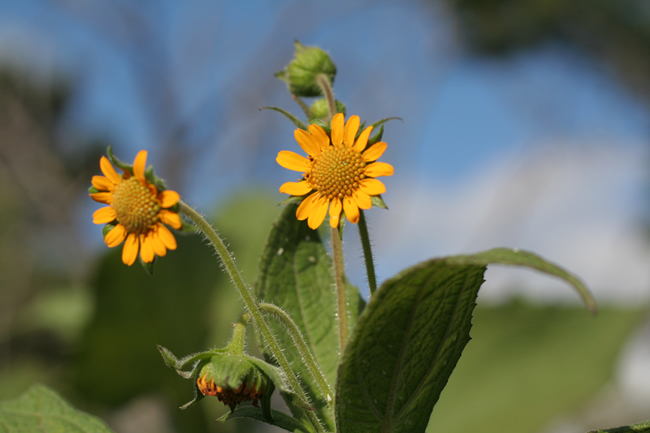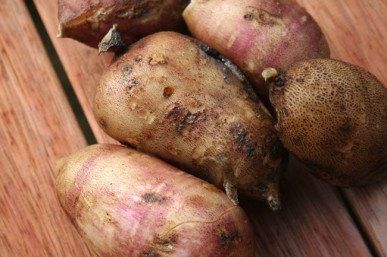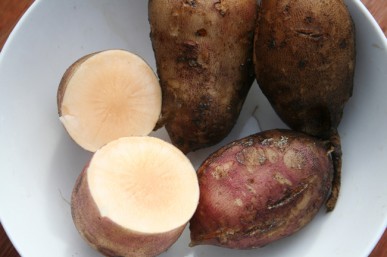Article by Gail Thomas
Yacons (Polymnia edulis) are an Andean crop with a long history, having been found in pre-Incan tombs. They produce edible tubers which somewhat resemble dahlia tubers in appearance. Yacons are similar to, but not as invasive as, Jerusalem artichokes. Along with green cuttings, small pink skinned offsets at the base of the plant’s stem are used for propagation while the smooth, elongated brown skinned crisp textured tubers which can weigh from 100-500g, are the edible portion of the crop.
Planted in spring, yacons grow with a central stem – young stems can also be cooked as a vegetable – reaching around 2m high and having large triangular spade shaped leaves. In autumn, gold daisy-like flowers appear, after which the plant dies down and the tubers are then ready to harvest and are best dug as required as the tubers tend to soften once harvested. Yacons store carbohydrates in the form of inulin rather than starch and consequently are suitable for diabetics.
Yacons are low in calories and can be eaten raw or cooked making them a tasty addition to salads and stir-fry dishes or they can be prepared similarly to potatoes, -boiled, baked, or as chips, – but are best peeled before consuming. Their sweet translucent flesh retains its crunch when cooked and pickled yacons make an interesting accompaniment to cold meats, terrines or as part of an antipasto platter.



